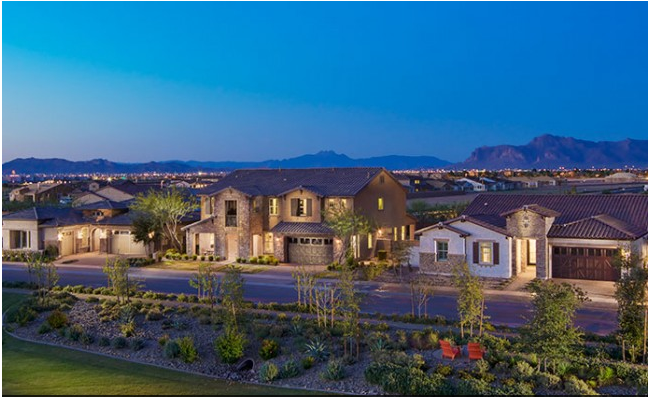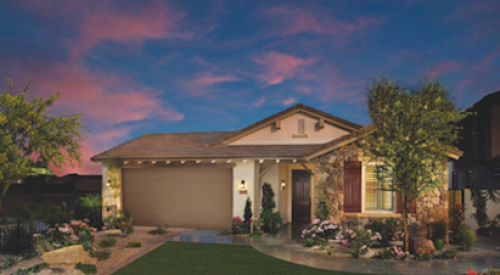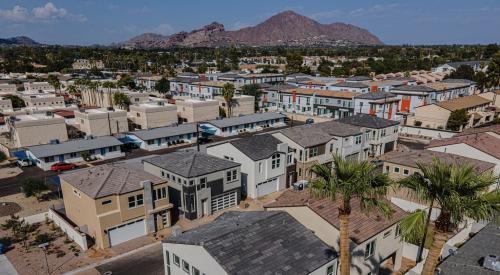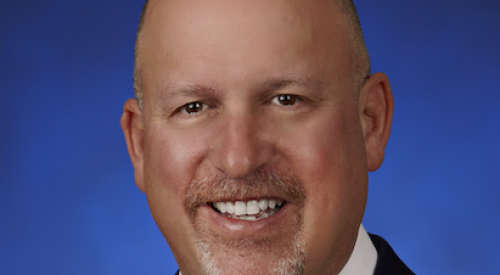Maracay was one of five builders in the Weyerhaeuser Real Estate Company portfolio that merged with TRI Pointe Group in 2014. The new parent company retained the senior management and organizational structure of each builder in order to maintain their entrepreneurial spirit and ability to make decisions based on activity in local markets. Andy Warren, president since 2009, talks about what’s happening in Arizona.
Q: At the beginning of the recovery, Phoenix’s new-home builders were competing against a sizable inventory of distressed housing. Maracay responded with a new product line that was more water and energy efficient than resales, offered better indoor air quality, and introduced Flex Design. Now that the distressed housing inventory has shrunk, what other variables are affecting the Phoenix market and pushing Maracay to stay fresh?
A: You’re describing our Living Smart program, originally pioneered by our sister company Pardee Homes, and which we adapted to Arizona about five years ago. We continue to include Living Smart and Flex Design today as part of our standard offering in all of our communities. While all of the components of the Living Smart program are important to our buyers, it’s no surprise that they are most interested in energy efficiency, which translates to low monthly operating costs. HERS ratings were relatively new when we launched the program but have become the de facto rating system for gauging the energy efficiency of a builder’s new homes. By making continuous improvements to our designs and components over the past several years, we’ve driven down our HERS ratings to be best-in-class, which stack up favorably against our competitors. So what was once a differentiator of new versus used has become a differentiator among home builders. With our newest communities achieving HERS ratings in the mid-to-upper 50s, we’re enthusiastic that we’re winning that battle.
Onto design ... While we were excited about the portfolio of home designs we launched during the depths of the recession, the market dynamic at the time placed an emphasis on cost-effective designs and internal operating efficiency. So we tended to offer the same well-designed plans in multiple communities. Over the past few years, we’ve moved to more site-specific architectural designs that optimize the relationship between the footprint of the home and the size of the home site, and also create more tailored and unique architectural statements that make sense for the locational context. For instance, Pueblo or Spanish Hacienda designs are popular in some of our Tucson communities, while in Phoenix we’ve found great success with more Craftsman- and Territorial-inspired designs.
The main difference between today and the immediate post-recession period is probably location. Coming out of the recession, builders in our market were building homes on the pre-boom existing supply of lots, in whatever locations they happened to be. Most of those communities have long since been completed, so now we are developing new communities from scratch. Maracay targets premium buyers who have the purchasing power to be selective on their location choices, so we’ve been focused on being in only the best locations with transportation access, great schools, thoughtful community designs, and no site negatives.
Q: Did the recession change the Phoenix buyer from looking at housing primarily as an investment to being a place that meets their individual needs? If so, what are the ramifications for builders?
A: I think the dynamic you describe was really a national phenomenon—not unique to Phoenix. But perhaps our market felt it more acutely than most because when people were considering where to invest in housing, it made sense to choose Phoenix because of our strong job and population growth.
My opinion is that we’ve returned to a more healthy perspective on homeownership that really existed for multiple decades prior to the housing bubble. Namely that what should primarily drive homeownership decisions are lifestyle concerns such as quality communities, schools, access to employment, and functional and beautiful home designs, but that fundamentally housing still needs to be a sound investment choice as well. For Maracay this is an affirmation of our strategy that starts with choosing only to be in the strongest locations, and then creating additional value with our strength in community design and product execution. Everything starts with location, and we’ve been rigorous in only developing neighborhoods in the best locations with no site negatives.
Q: How is the in-house mortgage origination service (TRI Pointe Connect) working out for Maracay?
A: TRI Pointe Connect has exceeded our expectations since it was launched early in 2015. Maracay Homebuyers now have a mortgage financing relationship that is seamlessly integrated into their overall home buying experience. The TRI Pointe Connect team is focused exclusively on the financing needs of Maracay and other TRI Pointe Group Builder customers without the demands and distractions of other business concerns. Reliable execution, customer satisfaction and no surprises at closings are the main benefits of this relationship.
Q: What can you tell us about the Meadows master planned community?
A: For several years now the two strongest submarkets in the Phoenix new home market have been the East Valley and Northwest Valley. Meadows, located in sought-after North Peoria, is unquestionably the best located and designed master plan in the Northwest Valley, and we are excited to launch our multiple programs there in September. Meadows is a great example of our overall strategy to combine the best locations and community designs with thoughtfully designed product offering that is differentiated from the competition. Specifically we will be offering four collections of home sites, all of which are appreciably larger than typical in the market. What this means for our buyers is that they have the space to enjoy Arizona outdoor living, from backyards that are about 60- to 70-percent larger than typical, and elbow room between the homes that will provide for the flexibility to choose from an array of accessory attached and detached garages.














